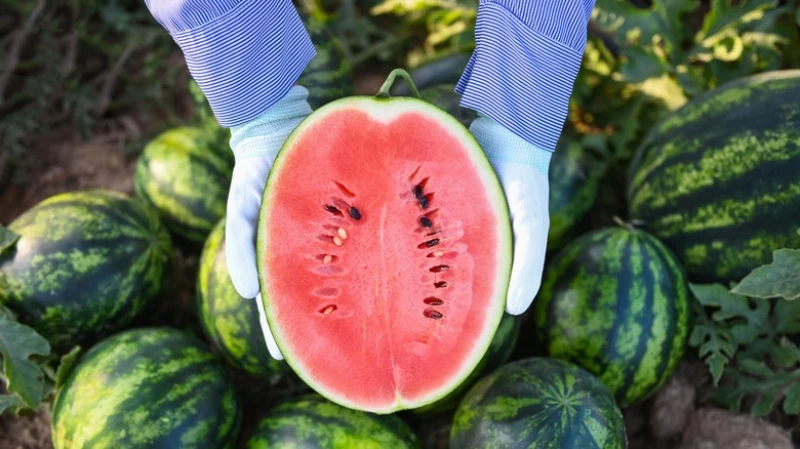Summer brings forth the promise of sunshine, backyard gatherings, and the anticipation of biting into a juicy, sweet watermelon. For those who have been nurturing their watermelon plants, the moment of truth comes when it's time to harvest the fruits of their labor. To avoid the disappointment of a bland or unripe watermelon, it's essential to know how to spot the signs of ripeness. By examining the melon's grow spot, checking for uniformity in the shell, and listening for the perfect sound when tapping on the rind, you can ensure a flavorful and satisfying watermelon experience.
Watermelons require approximately 80 to 100 days to mature fully, and the optimal time for planting them is in late spring to ensure a bountiful harvest during the warmer months. However, various factors influence their readiness for picking. The pH level of the soil plays a crucial role in the growth of watermelons, and excessive watering can lead to cracks that make the fruits inedible. It is recommended to maintain a soil pH of around 6.0 to 6.5 for ideal watermelon production, providing the necessary nutrients for healthy growth. Additionally, it is advisable not to plant watermelons near other melons to prevent pest infestation, which can damage the fruits. When the watermelons appear ready for harvesting, carefully inspect each one before harvesting.
Examine the field spot and the rind
When assessing the ripeness of your watermelons, consider various factors. A shiny rind indicates that the fruit is not yet fully ripe. Ripe watermelons should have a consistent size and shape, typically round or oval. Choose fruits for harvesting that are not elongated or narrow in shape. Any unusual dents or irregularities may signify underripeness or insufficient nutrients and water, resulting in less flavorful fruits.
As the watermelon grows, it develops a field spot, a discolored area where it touched the ground. Before picking a watermelon, inspect this spot to gauge its ripeness. Yellow spots indicate a sweet and juicy interior, while green spots suggest the fruit is not yet ripe. White spots may indicate a less sweet and juicy watermelon compared to those with yellow spots.
Use the tapping method to assess watermelon readiness
When it comes to determining if your watermelons are ripe for harvest, visual cues are not the only option. Another method to test the readiness of your fruit is the tap test. While opinions differ on its effectiveness, it can be a useful technique if done correctly. By tapping on the rind, you can listen for different sounds that indicate the ripeness of the watermelon.
A hollow sound when tapping may suggest that the fruit is too ripe, while a higher pitch indicates that it is not yet ready. The ideal watermelon will produce a deep, resonating thud when tapped, signaling perfect ripeness. It's important to familiarize yourself with the different sounds and also examine the uniformity and field spots of the watermelon before relying solely on the tap test.
By combining visual cues, field spot inspection, and the tap test, you can ensure that your watermelon is at its peak flavor before picking. Don't settle for anything less than perfection after all the effort you've put into growing your garden produce.









